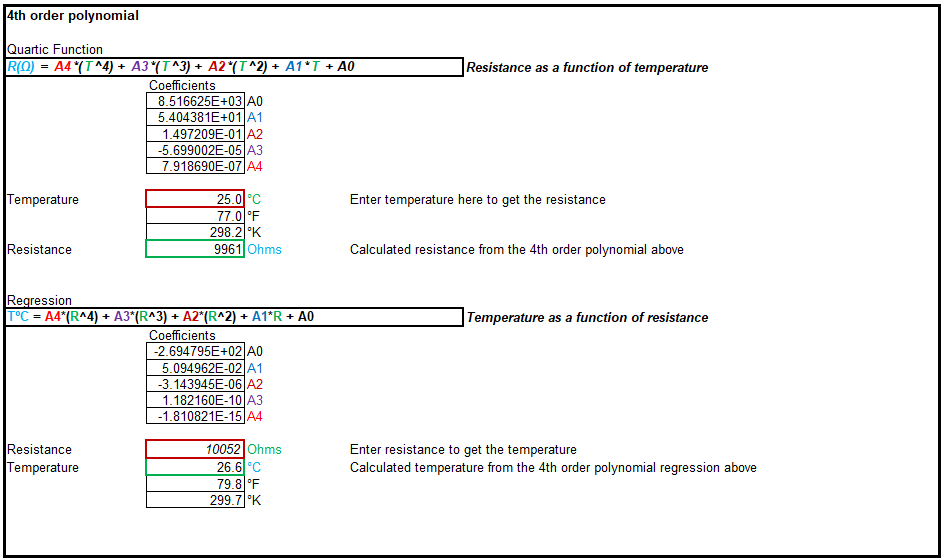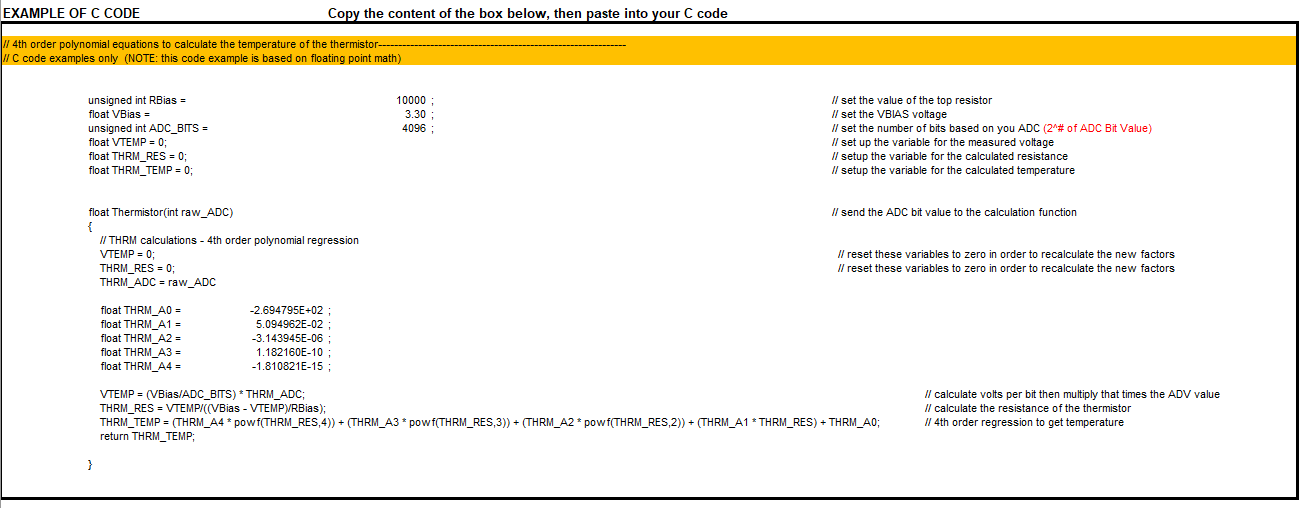SBOU246 January 2022 TMP61 , TMP61-Q1 , TMP63 , TMP63-Q1 , TMP64 , TMP64-Q1
3.1 Firmware Design Considerations
The recommended method for calculating the temperature values from TI's TMP6 Linear Thermistor portfolio is the 4th order polynomial regression. This is the most accurate and fastest method to calculate the temperature- with no look-up table needed. Moving on to the 4th Order Polynomial TMP vs. Res tab, we find both the Quartic Function and Regression model which provide the 4th order polynomial for the calculated temperature/resistance of the device.
 Figure 3-1 4th Order Polynomial.
Figure 3-1 4th Order Polynomial.  Figure 3-2 4th Order Polynomial C Code.
Figure 3-2 4th Order Polynomial C Code.